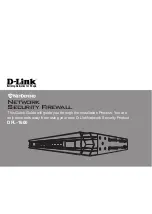
Chapter 3: Operation
System statistics
Page
3-87
Attribute
Meaning
•
Spatial Frequency: Range of spatial frequency for each bin.
Each bin includes 32 consecutive spatial frequency values.
•
Azimuth (degrees): Azimuth range in degrees corresponding
to the spatial frequencies of the bin. The zero-degree Azimuth
is boresight.
Note
Some SF ranges correspond to multiple azimuth ranges.
This is because for some spatial frequencies the AP
generates beams in multiple azimuth directions. The SM
can be physically located in any of the azimuth ranges.
Spatial Utilization
(Contd.)
7.
Instantaneous (%): Frame utilization for the SF bin, updated every
500 ms. The frame utilization percentage accounts for all traffic,
sector mode, beamforming mode, and MU-MIMO mode.
8.
Total (%): Average utilization in the SF bin for the past 1/5/15
minutes, as selected in the Statistics Display interval.
9.
Max (%): Maximum instantaneous utilization in the 1/5/15 minute
interval.
10.
Min (%): Minimum instantaneous utilization in the 1/5/15 minute
interval.
11.
VCs in Range: List of VCs with spatial frequency falling in the bin.
12.
LUIDs in Range: List of LUIDs with spatial frequency falling in the bin.
Note
The size of each SF bin is smaller than the beam generated
by the AP during a MU-MIMO transmission. This means
that when a VC in a bin is scheduled for a MU-MIMO
transmission, the adjacent bins also receive the signal, and
the transmission is counted towards their utilization as
well. Bins with consistent low utilization indicate the areas
of the sector where more SMs could be installed, or the
cutomers that could be offered higher data plans.
Spacial Frequency
Heatmap
The spatial frequency heatmap allow the operator to see how the 450m
spatial frequency have been occupied (utilised) over the previous hour of
operation. There are two heatmaps the first displays downlink utilisation
and the lower the uplink utilisation. The heatmaps are useful when
operators are identifying:
•
congested spatial directions
Summary of Contents for PMP 450 AP
Page 51: ...Chapter 1 Configuration Quick link setup Page 1 23 ...
Page 155: ...Chapter 1 Configuration Configuring security Page 1 127 ...
Page 163: ...Chapter 1 Configuration Configuring security Page 1 135 ...
Page 164: ...Chapter 1 Configuration Configuring security Page 1 136 ...
Page 193: ...Chapter 1 Configuration Configuring radio parameters Page 1 165 ...
Page 194: ...Chapter 1 Configuration Configuring radio parameters Page 1 166 ...
Page 195: ...Chapter 1 Configuration Configuring radio parameters Page 1 167 ...
Page 206: ...Chapter 1 Configuration Configuring radio parameters Page 1 178 ...
Page 210: ...Chapter 1 Configuration Configuring radio parameters Page 1 182 ...
Page 636: ...Chapter 5 Troubleshooting Logs Page 5 16 Figure 95 SM Authorization log ...
















































